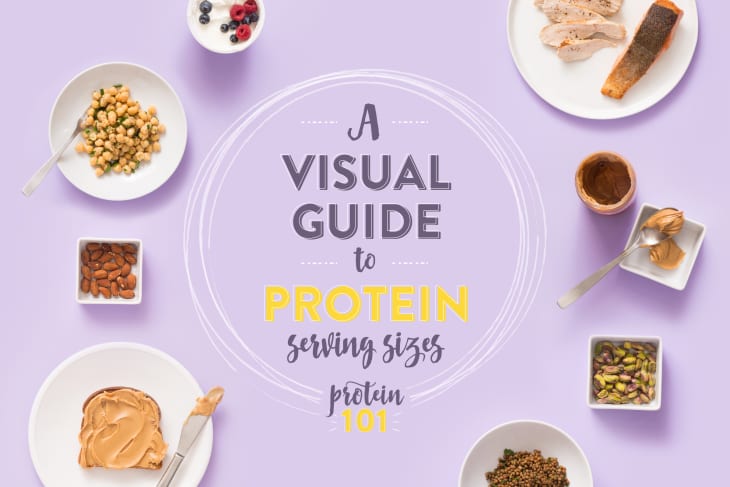Hand Measure of 1oz of Ground Beef
A Visual Guide to Protein Serving Sizes

We all know that protein is important. To reach your daily recommended intake, you may be trying to eat a serving of protein-rich food at every meal. But the big question is, when it comes to protein, what exactly is a serving?
Here's what you should know about recommended servings, and how to tell at a glance what's enough — no measuring, scales, or guides needed.
Protein 101
What Is a Serving Size?
The USDA and the FDA jointly determine recommended serving sizes of food based on the average amount that Americans over the age of four consume in a single seating.
It's important to understand, however, that these serving sizes are not hard-and-fast rules for food consumption. A serving size is most importantly a measurement that allows food manufacturers to create uniform nutrition labels for consumers, so you, the consumer, can have a clear image of what that food contains. It's then up to you to determine how much of the item you need for your own wellness and nutrition needs.
These visual cues are references to help you understand what a standard serving of common protein sources are; adjust your daily intake of these wholesome items to your own needs.
Meat and Fish
The standard serving size for any variety of meat or fish is 3 ounces.
Rather than weighing this out, the best visual indicators of this amount is roughly the size of the palm of your hand or the size of a standard deck of playing cards.
Beans, Legumes, and Grains
A half-cup of cooked beans, legumes, and grains is the standard serving size. To put that in perspective, a can of beans contains about 1 3/4 cup, which is over triple this serving size.
Besides simply scooping 1/2 cup into a bowl, 1/2 cup is roughly the size of the front of your clenched fist.
Nut Butters
That standard serving size of any nut or seed butter, be it peanut, almond, sunflower, or even tahini, is 2 tablespoons.
This looks like a heaping dinner spoon's worth or a generous slather on toast.
Serving size = 2 tablespoons
Yogurt
A nice-sized bowl of Greek or regular yogurt is equal to the 1 cup serving size that's noted as standard.
This also roughly looks like the size of a clenched fist, which is useful if you're a bit unsure just how much your breakfast bowls hold.
Nuts and Seeds
Since the serving size of nuts and seeds is based on weight, the actual numbered amount can vary drastically. Walnuts are heavier and larger than pistachios so just 7 come out to an ounce, while 49 shelled pistachios are the same weight.
Who I Am (and Why I'm Writing to You)
As a food editor who is also a Registered Dietitian, I know the confusion of our fractured landscape of diet information. But if you strip away the study-of-the-day and fad diets, there is solid information we can all learn about basic nutritional building blocks.
We're offering these unsexy yet useful tools to empower cooks to make decisions that suit them with solid, science-driven resources.
This especially applies to protein, the first topic in our new Nutrition 101 series. We want to give you the tools for confident eating and a more wholesome diet — something we can all get behind.
Source: https://www.thekitchn.com/a-visual-guide-to-protein-serving-sizes-243496
0 Response to "Hand Measure of 1oz of Ground Beef"
Post a Comment